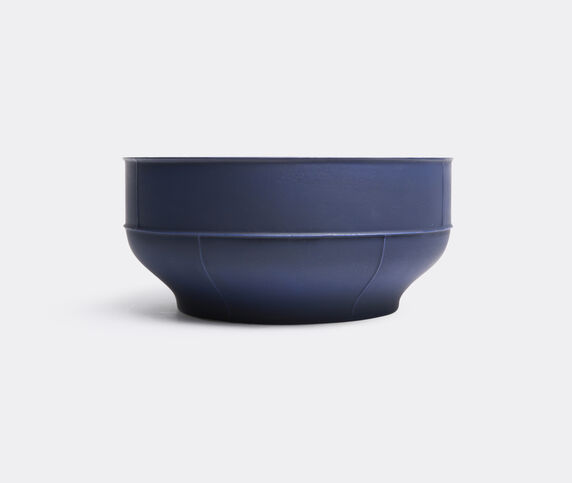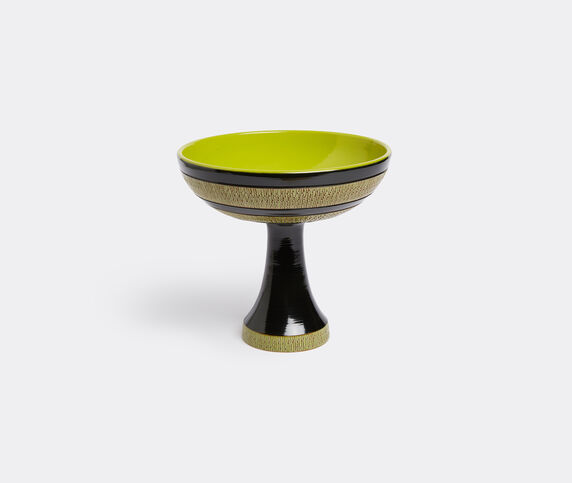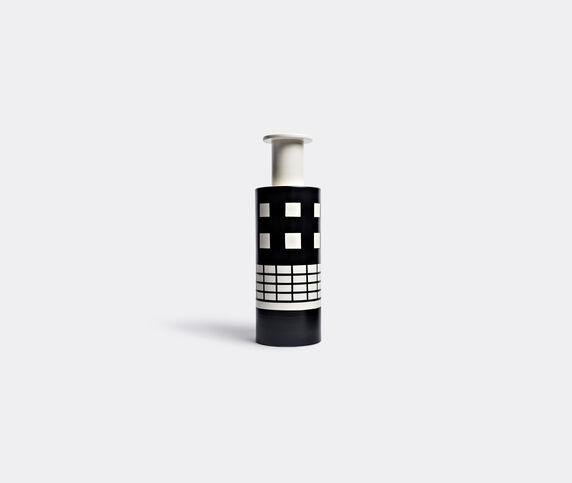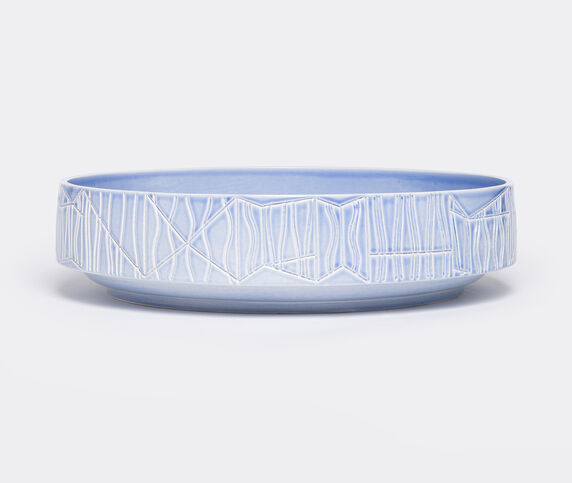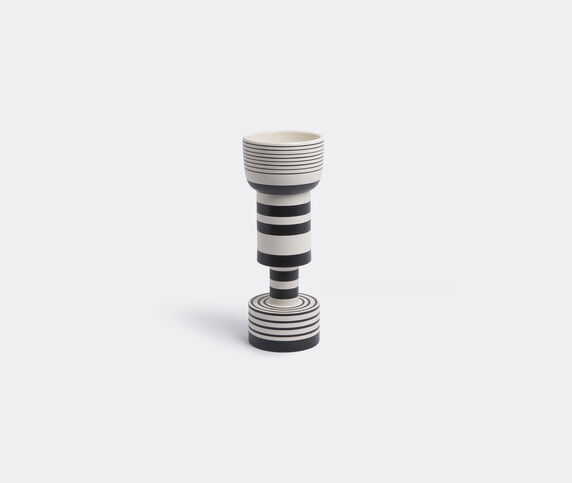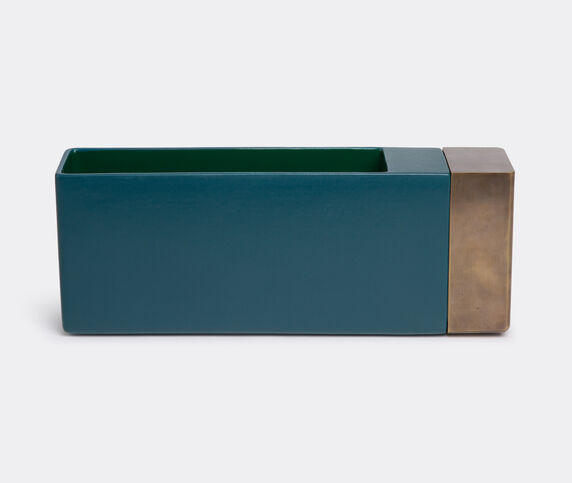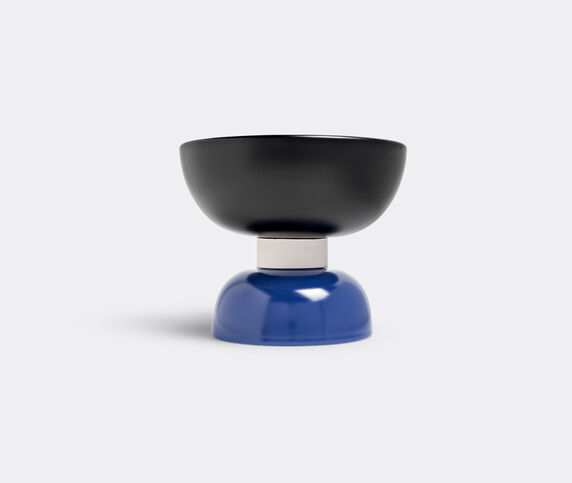Making the most of the Montelupo Fiorentino area’s rich tradition in ceramic production, Bitossi Ceramiche was founded in the early 1900s. In the mid-20th century, art director Aldo Londi spearheaded the Italian company’s growth and instigated its landmark collaboration with architect Ettore Sottsass. Bitossi is an official member of the Registry of Italian Historical Companies.
- price:
- Change view:
- Two
- Four
Designer Ceramics Made In Italy
Founded in the early 1900’s, Bitossi Ceramiche makes the most of the Florentine’s rich tradition in ceramic production. Over the centuries the Bitossi family have been kiln workers, sculptors, painters and especially potters, working only a few kilometres away from the centre of Florence.
In 1921 Guido Bitossi founded the "Maioliche artistiche Guido Bitossi" factory, proposing a renewal in their production, combining research and study of ceramic products with the traditional and classical styles of the past. The evolution of Bitossi Ceramiche manifested most prominently under the artistic direction of Aldo Londi in 1946, who had a keen eye for creating unique Italian products. Londi instigated a collaboration with architect Ettore Sottsass in 1955 in order to experiment and create new ceramics. In the end his collections for Bitossi Ceramiche opened up a new chapter in the history of Italian design.
From 1929, Bitossi Ceramiche has remained a family run business, passed from generation to generation and always represents the true excellence of Made In Italy. In 2014 the Manifattura of the brand was listed in the Register of "Historical Italian Companies". Bitossi Ceramiche now invests primarily in research and design, while continuing to interpret the processes proposed by Londi. It is therefore no surprise that external collaborators, architects and designers are inspired by the techniques of the past documented in the Historical Archives, in the unwavering search for balance between know-how, innovation and research.
The Bitossi family have a collection of over 7000 historical works, documents and materials related to their artistic ceramic production. Their Industrial Archive attempts to preserve and valorise the historic memory that the family have been collecting over the years. In order to safeguard the heritage of the important Florentine Ceramic area and their work in ceramics, the Vittoriano Bitossi Foundation became involved in 2010. One of the foundations statutory purposes is precisely “the preservation and valorisation of the history of artistic ceramics in the Florentine territory”.
In 2003, the Bitossi Artistic Industrial Museum opened. It is world renowned as an industrial museum, exhibiting artistic ceramic productions of the twentieth century and in particular those from the mid nineteen-fifties up until the present. It also houses exhibitions of the architects and designers who have worked with the company.
It is thanks to the entrepreneurial skills developed throughout the years and the constant research for quality in each and every product, that the identity and Foundation and Museum of Bitossi Ceramiche have been established. A strong example of Italian excellence is the brand’s business approach to focusing on craftsmanship and bringing attention to many outstanding designers who expressed a special creativity, resulting in a number of timeless icons.
Bitossi Ceramiche Most Iconic Products: Rimini Blue by Aldo Londi
Londi channelled his experimentation with different materials, colours and techniques into the meticulous stylistic 'Rimini Blu' , launched in 1959. Still in production for over sixty years, the collection has become indispensable to the Bitossi Ceramiche name. The title for the range is no coincidence. Taken from a famous Italian resort "Rimini Blue" and famous Italian pop songs at the time, such as "Nel blu dipinto di blu (Volare)" by Domenico Modugno and "Ricordati di Rimini" by Fred Buscaglione.
The products are defined by their simple surface, adorned with abstract geometric symbols creating a frieze. Quick touches of colour are fixed under the blue glaze, after being fired these magically reproduce the rays of light reflected by the sea. Over the years, the ‘Rimini’ range has been produced in other colour variations, such as "Rimini Sunset", "Rimini Bright Green" and "Rimini Red Venetian".
Designers Available on Frankbros
Max Lamb
Lamb is a British designer, who combines traditional, even prehistoric, design methods with a contemporary design. Lamb’s love of nature, inspired by his Cornish upbringing, is often manifested in his pieces, giving both materials and their processes their own voice. Max Lamb applies unusual approaches to natural materials, such as adding pewter to sand and volcanic rock.
It is no surprise therefore, that for his 2017 ‘ Wiggle’ range for Bitossi Ceramiche Lamb developed a new manufacturing technique; cutting slabs of clay using wire and constructing box-like vessels from the cut slabs. The use of the wiggled wire produces a wave-like surface, which is then enriched and underlined by the glazes.
DimoreStudio
In 2003 Emiliano Salci and Britt Moran founded DimoreStudio after both having worked in design, arts and fashion. Each project is born and developed in a personal and recognisable way. Their objects co-exist with recycled items and other custom designed objects to create a particular atmosphere. Their language is therefore formed by emotive inventions and enhancements of lights, lacquering and oxidations. Crossing boundaries between dreams and reality, using various disciplines to create timeless and emotional spaces and items. Every object is just as powerful as a component of an ensemble as it is as a singular creation, resulting in a studio that has an uncensored aesthetic.
DimoreStudio's collection "Equilibri" for Bitossi Ceramiche, produced in 2016, consists of vases and pots in which brass meets ceramics for a harmonious mix of tradition and contemporaneity.
Ettore Sottsass
In 1947 Sottsass founded his design and architecture studio in Milan. His collaboration with Italian manufacturer Olivetti resulted in many iconic pieces, some of which can be found in the New York MoMa collection. In 1981 he spearheaded the Memphis project, a group of creatives who set about defining postmodern design.
Sottsass' partnership with Bitossi Ceramiche lasted almost 30 years. The Ettore Sottsass jr. collection includes ceramic vases and bowls most likely produced in 1962 after a long journey to India. The collection perfectly expresses Sottsass’ relationship with material, shape and colour.
Bethan Laura Wood
Wood’s designs are driven by her fascination with what connections humans and objects. The London-based designer often collaborates with local manufacturers and artisans, making the primary focus pattern, colouration and pagination of objects. Bethan Laura Wood constantly explores, rediscovers and celebrates the ‘mundane’ to understand how they can become cultural sacraments. Working on an ongoing basis with Venetian and Vicenza craftsmen, many international partners have commissioned the creation of her works and installations.
Many of the pieces in Wood’s range "Guadalupe" for Bitossi Ceramiche were inspired by a trip to Mexico City in 2014. The Mexican capital introduced her to lines and shapes that had an alternation of sweetness and rhythm, which was translated into her designs. When engraving, Wood focuses on the surface of a piece, engraving it and then adding colour that interacts with the grooves to create a nearly three-dimensional effect.
Benjamin Hubert
The Benjamin Hubert Studio was founded in 2007, and Benjamin Hubert Ltd specialises in the industrial design of furniture, lighting, products and installations, working with international manufacturers. Hubert’s studio works on both mass and batch produced consumer products, as well as limited editions and one offs. Hubert has exhibited internationally and collaborated with important international design and furniture brands, such as Cappellini.
Hubert’s range for Bitossi Ceramiche in 2014, called "Seams", is a contemporary collection of five large centrepieces characterised by their single colour and exposed seam lines on the exterior. Featuring a matte glaze in cool colours, it is the delicate seam detail, which would normally be removed, that defines the collection. The process of slip casting was simplified without creating the need for secondary processes.
Aldo Londi
As previously mentioned, Aldo Londi was an exceptional contributor to Bitossi Ceramiche. The iconic "Rimini Blu" series, includes over 150 designs. Londi also designed limited edition cylindrical vases as part of the "Re Editions" collection of ceramics. A lot of Londi’s creations can be viewed at the MAIB–Artistic Industrial BitossiMuseum in Montelupo.
Shop Bitossi Ceramiche's Collection on Frankbros
Shop via Category:
Shop via Designer:





























